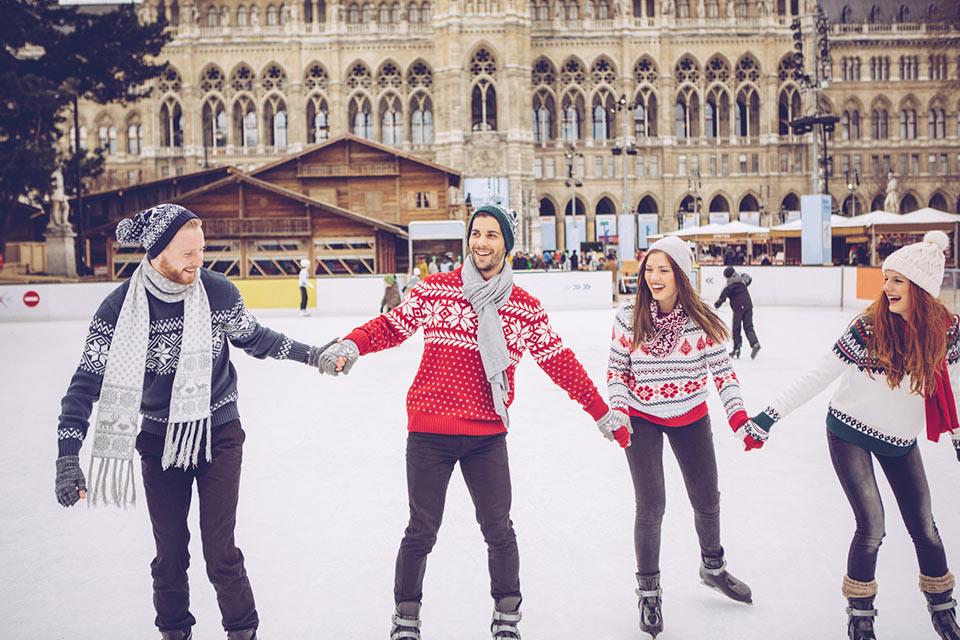Winter season is full of fun holidays, sports and even building snowmen — and let’s not forget hot cocoa when you head back inside. However, winter also has its risks, like slipping or falling on the ice — which can hurt a great deal more than your pride. A fall can lead to bumps, bruises and also broken bones. And while you need to shovel to keep pathways clear, shoveling also has risks. Check out the tips below to help keep you safe this winter.

Be sure you’re dressed for the weather.
When there’s snow or ice on the ground, you need to wear the right shoes.
- Wear boots or shoes with rubber or neoprene soles and tread to keep you from slipping.
- If you don’t have shoes or boots with a lot of tread, you can buy cleats or spikes that attach to your everyday shoes to help prevent falls.
Also, dress warmly. Even though outdoor activities will keep you warm, your ears, nose and fingers will need special care to stay comfortable.
Make sure your sidewalks and driveways are free from ice and snow.
Shovel the sidewalk as soon as possible after it snows to help keep ice from forming. You can also pour salt or ice melt on it to keep it from freezing and turning into ice.
- While shoveling can be good exercise, it can also be dangerous. If you have a history of heart disease, don’t shovel at all!
- Shovel slowly. It’ll raise your heart rate and blood pressure. But like any type of exercise, you need to stretch and warm up before you start.
- Use a small shovel or only partially fill your shovel. Be sure to lift the shovel with your legs bent to help keep your back safe.
- Don’t push yourself. If you run out of breath, take a break.
Be careful with cars.
Make sure your footing is stable before you get in or out of a car.
Watch out for black ice.
Black ice can be more dangerous than regular ice because it’s very difficult to see. Keep your hands free when you must walk in icy spots. If you slip, you’ll need your hands to catch yourself and break your fall.
Think ahead when you’re outdoors this winter. A minute of planning can save you months of recuperation.
